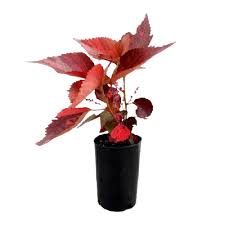Acalypha Plant: Vibrant Foliage & Care Tips
Discover the beauty of the Acalypha plant, a member of the Euphorbiaceae family, known for its vibrant foliage and unique growth habits. Learn about its native regions and popular species like Acalypha indica and Acalypha wilkesiana, perfect for UAE gardens.
5/24/20254 min read


Introduction to Acalypha
The Acalypha plant, a member of the Euphorbiaceae family, is distinguished by its vibrant foliage and unique growth habits. Originally found in tropical and subtropical regions, Acalypha is native to areas such as Africa, Asia, and the Pacific Islands. Among its numerous species, Acalypha indica and Acalypha wilkesiana stand out for their ornamental features and adaptability, making them popular choices for gardeners in the United Arab Emirates (UAE).
Acalypha indica, commonly referred to as the Indian Nettle, is notable for its lush, green leaves that may display striking red or orange foliage under certain conditions. This species is renowned for its resilience and ability to thrive in diverse soil types, which makes it an attractive option for many gardeners in the UAE. On the other hand, Acalypha wilkesiana, often called the Copperleaf plant, is highly regarded for its stunning, variegated leaves that present a rich blend of shades ranging from green to multicolored patterns. The aesthetic appeal of this plant makes it a favorite in both residential and commercial landscapes across the region.
Acalypha has gained significance in the UAE gardening scene due to its versatility and low-maintenance requirements. The plant can adapt to various environmental conditions, including the arid climate of the UAE, where it continues to flourish when provided with appropriate care. Additionally, Acalypha contributes to enhancing biodiversity, offering habitat and food for a variety of pollinators and insects. Its ornamental qualities combined with its ecological contributions make it an excellent choice for those looking to cultivate plants that provide both beauty and environmental benefits.
Cultivation of Acalypha in the UAE
The successful cultivation of Acalypha in the United Arab Emirates necessitates an understanding of the region's unique climatic conditions. The UAE experiences a hot desert climate characterized by high temperatures, low humidity, and limited precipitation, which presents specific challenges for growing Acalypha species. To ensure optimal growth, it is essential to select the appropriate species that can thrive in this environment. Acalypha wilkesiana, for example, is favored for its vibrant foliage and ability to tolerate heat.
Soil type is a crucial consideration when cultivating Acalypha. The ideal substrate should be well-draining to prevent waterlogging, which can lead to root rot. A mixture of potting soil with added perlite or sand can enhance drainage while providing essential nutrients. Testing the soil's pH is also advisable, as Acalypha prefers a slightly acidic to neutral pH range of 6.0 to 7.0. Additionally, incorporating organic matter such as compost can improve soil fertility and moisture retention, ultimately benefiting Acalypha's growth.
Sunlight exposure is another critical factor in the cultivation of Acalypha. While most species prefer bright indirect light, certain varieties can tolerate full sun. In the scorching UAE sun, it is best to provide some afternoon shade to protect the foliage from sunburn. Proper placement can be critical; positioning Acalypha near east-facing windows or shaded outdoor areas will allow for ample light without the damaging effects of extreme heat.
Watering practices should be carefully monitored to cultivate healthy Acalypha. Despite the plant's drought resistance, consistent moisture is necessary, especially during the growing season. Watering deeply but less frequently encourages deeper root growth. In contrast, reducing the frequency during the cooler months will prevent excessive moisture accumulation. Regular monitoring will ensure a healthy balance, leading to flourishing Acalypha in UAE gardens.
Care and Maintenance for Acalypha
The care and maintenance of Acalypha plants are pivotal for ensuring their health and vibrancy, especially in the unique climate of the UAE. Acalypha, also known as copper leaf or blazing popularity, thrives with proper attention to watering, sunlight exposure, and fertilization. Daily care involves monitoring soil moisture; Acalypha prefers consistently moist but not waterlogged soil. Hence, watering should be adjusted according to the season, ensuring that excess water drains away to prevent root rot.
Weekly maintenance includes examining the plants for signs of pests such as aphids or spider mites, which can afflict Acalypha. If detected, organic insecticidal soap can be an effective remedy. Regular leaf cleaning can help in keeping these pest populations at bay while promoting optimal growth. Additionally, a well-placed watering schedule will help to maintain humidity around the plant, which is beneficial in the arid UAE climate.
Seasonal care entails a more structured approach to fertilization and pruning. Acalypha benefits from a monthly feeding of a balanced, water-soluble fertilizer during the growth phase, particularly in late spring and summer. This will encourage lush foliage and more vibrant color variations. As for pruning, it is essential to trim dead or yellowing leaves to encourage new growth and improve airflow within the plant. A light pruning in early autumn will also help to contain the plant’s shape and enhance its overall aesthetic appeal.
Regularly caring for Acalypha plants ensures they remain healthy, resilient against common diseases, and capable of showcasing their striking appearance. By adopting these routines, cultivators can enjoy the beauty and vibrancy of Acalypha throughout the year in the UAE's diverse landscape.
Cultural Significance and Uses of Acalypha
The Acalypha plant holds a notable place in various cultures, serving a multitude of purposes that extend beyond mere ornamental use. One of its most significant roles is in traditional medicine, where various species are utilized for their health benefits. For example, in some cultures, the leaves and stems of Acalypha are brewed into teas or used in poultices to alleviate a range of ailments, including inflammation and digestive issues. This highlights the plant's integration into cultural practices and its value to indigenous communities.
In culinary applications, Acalypha has found its niche as well. Some regions incorporate its leaves into local dishes, where they are appreciated for their unique taste and nutritional benefits. This use not only enriches the local cuisine but also fosters a sense of community among those who share and pass down these culinary traditions. The integration of Acalypha into cooking showcases an appreciation for biodiversity and the utilization of native plants in everyday life.
Acalypha's aesthetic appeal cannot be overlooked. With its vibrant foliage and unique leaf shapes, it has become a popular choice in landscaping and interior decoration. Homes, gardens, and public spaces benefit from the striking visuals that Acalypha provides, as its lush greenery offers a contrast to urban environments. This ornamental use contributes to enhancing local biodiversity, providing habitats for various species while simultaneously fostering a connection between nature and human artifice.
Moreover, the cultivation of Acalypha supports environmental sustainability efforts. As a plant that can adapt to different climates, including the hot UAE landscape, its use in landscaping can reduce the need for high-maintenance plants. This not only conserves water but also promotes a more diverse and ecologically sound environment, reflecting the broader cultural significance of Acalypha in the masterful integration of aesthetics and ecological health.
